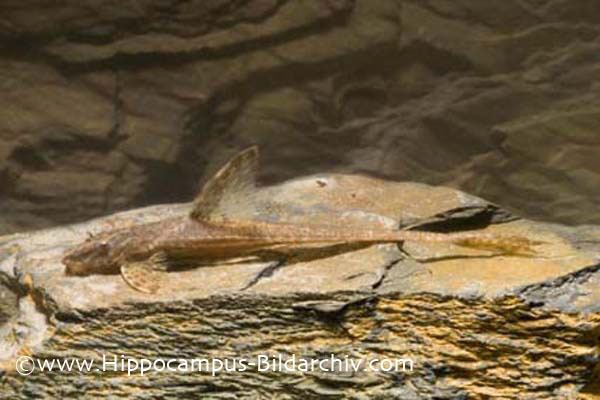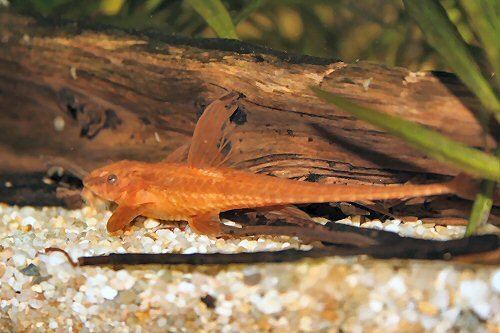Scientific name Rineloricaria Phylum Chordata Order Catfish | Tribe Loricariini Higher classification Loricariinae Rank Genus | |
 | ||
Similar Whiptail Catfish, Catfish, Loricaria, Loricariidae, Farlowella | ||
Rineloricaria sp red lizard catfish
Rineloricaria (from the Greek, rhinos meaning nose, and the Latin, lorica meaning cuirass of leather) is a genus of freshwater tropical catfish (order Siluriformes) belonging to the Loricariidae family. They are commonly called whiptail catfish because of the long filament that grows out of the tip of the caudal fin that is characteristic of the genus. With the exception of R. altipinnis from Panama, they are native to the rivers of northern and central South America. Some species are regularly seen in the aquarium trade.
Contents
- Rineloricaria sp red lizard catfish
- Whiptail catfish rineloricaria lanceolata eating lettuce
- Taxonomy
- Species
- Distribution and habitat
- Appearance and anatomy
- Reproduction
- References

Whiptail catfish rineloricaria lanceolata eating lettuce
Taxonomy

This genus was described by Pieter Bleeker in 1862, with R. lima as the type species. This genus is by far one of the most speciose of the subfamily Loricariinae, containing about 30 species. On the other hand, it is one of the least resolved genera. In 2008, 14 new species were added to this genus.

Hemiloricaria, Fonchiiichthys, and Leliella been variably considered synonyms of Rineloricaria; these genera were erected to account for differences in sexually dimorphic traits. However, the traits used to diagnose these genera have been thought to be insufficient.
Species
There are currently 63 recognized species in this genus:

Distribution and habitat
The genus is widely distributed on nearly the entire subcontinent, from Costa Rica to Argentina, on both slopes of the Andes. Rineloricaria species are found in a large variety of habitats, including large rivers, streams, and lagoons, associated with bottoms consisting of sand or rocks, sometimes found in marginal vegetation. They are also found to tolerate environments with a wide temperature gradient. Rineloricaria have an adaptive capacity enabling many species to exploit the most varied habitats; some species, such as R. strigilata, have been caught in highly polluted bodies of water and represent some of the main components of the ichthyological diversity in such habitats.
Appearance and anatomy
The average length of a Rineloricaria catfish is about 13 cm (5 in) long. The fish are long, slender, have no visible barbels, an erect dorsal fin, a very thin caudal peduncle, and a narrow face. Coloration of the fishes are usually light brown with darker blotches, and have a dark dorsal fin. They are also covered with bony plates and have a sucker disk mouth, as is common with most fish in the Loricariidae family.
Reproduction
Sexual dimorphism includes hypertrophied development of the odontodes along the sides of the head, on the pectoral spines and rays, and predorsal area of mature males. Several species also show hypertrophied development of the odontodes on the entire caudal peduncle. In males, the pectoral fin spine is often thick, short, and curved when compared to the female. Rineloricaria are cavity brooders. Numerous eggs (often more than 100) are laid attached to one another in single layer masses on the cavity floor, and are brooded by males. Rineloricaria exhibit high levels of karyotypic diversity with chromosome numbers ranging from 36 to 70.
